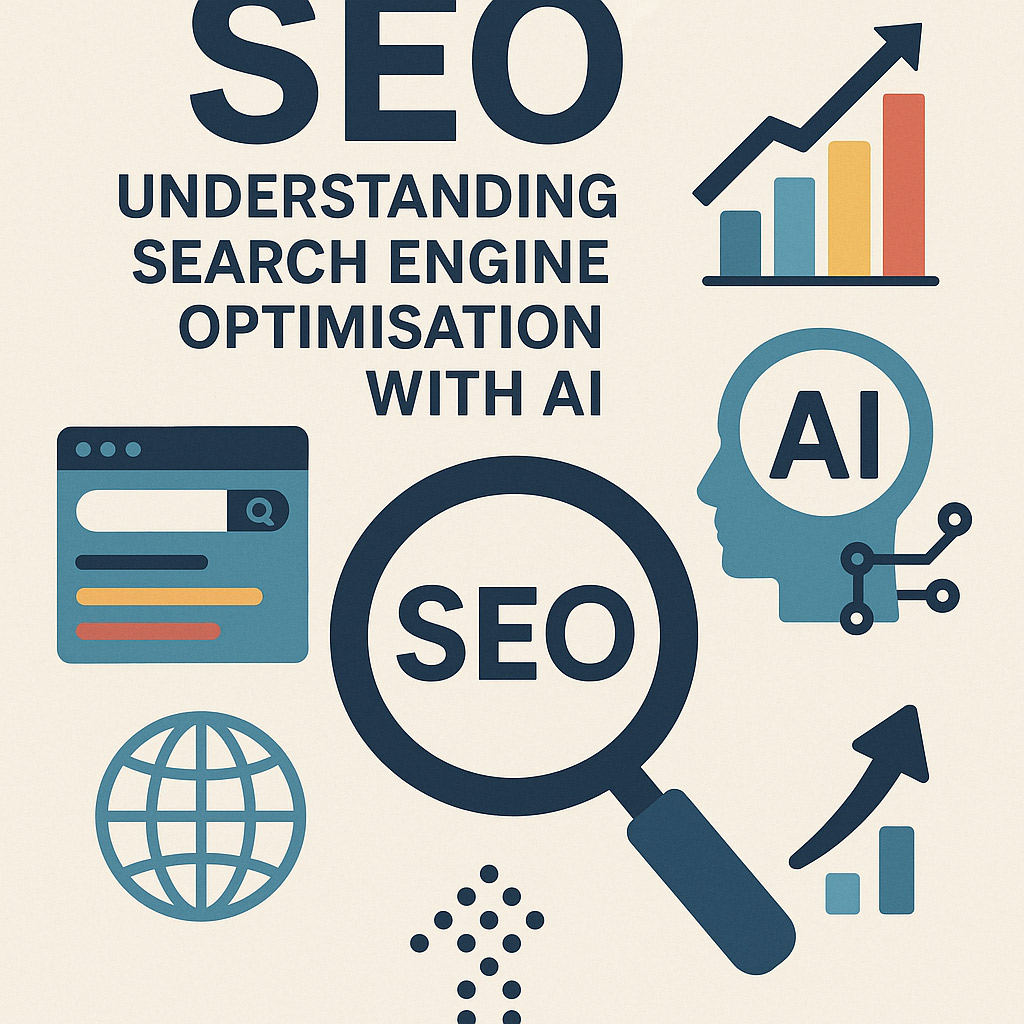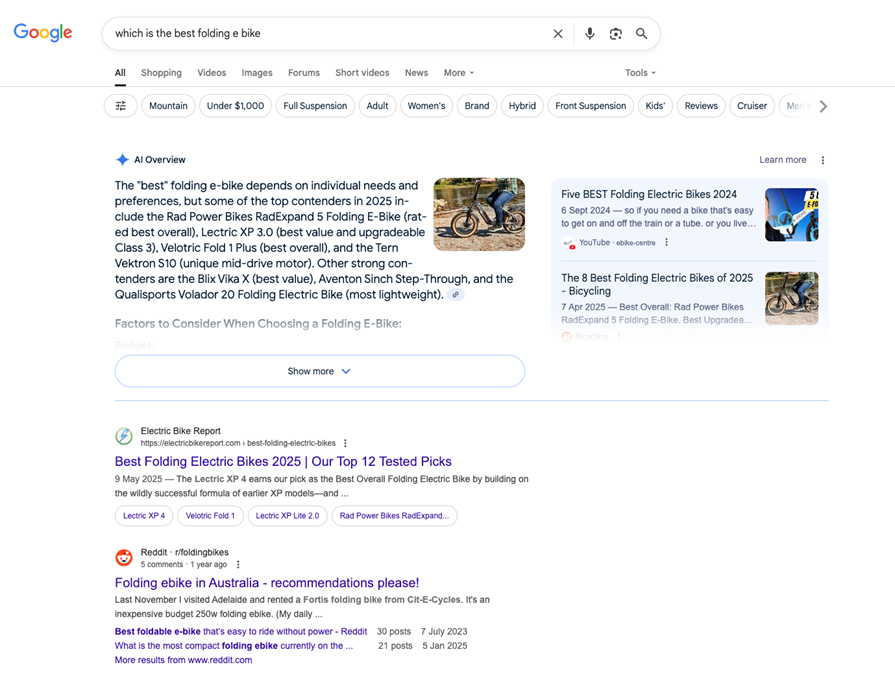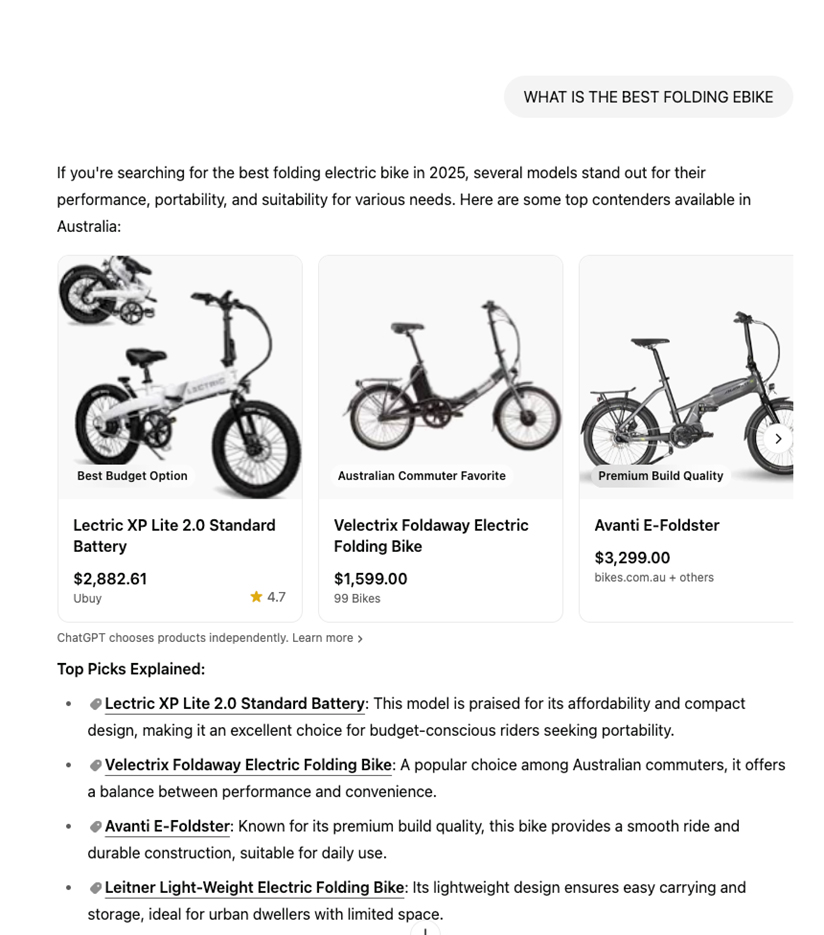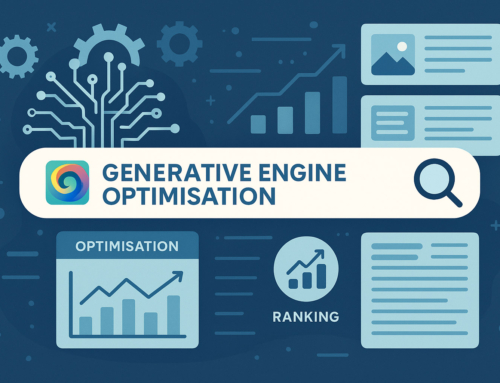Digital marketing is a constantly evolving field, and one of the biggest topics in the industry is the rise of GEO – Generative Engine Optimisation.
Previously, SEO was all about keyword rankings and driving organic traffic to your website, but GEO has been a game changer. As professionals with decades of experience in the industry, we think GEO has been one of the biggest shifts since the digital revolution.

AI tools like ChatGPT, Bing Chat, and Perplexity AI have changed how consumers get information, meaning marketers must yet again rethink their online search strategy.
So, what is GEO? And how does this affect your SEO strategy? Let’s take a closer look.
What is Generative Engine Optimisation (GEO)?
Generative Engine Optimisation (GEO) is the process of allowing AI-driven search tools like ChatGPT, Gemini, Bing Chat, and Perplexity AI to capture your content. Compared to typical search engines that display the links on a single page, GEO gives consumers instant answers to their queries.
An important point to note here is that GEO pulls answers from multiple websites instead of one. Here’s what GEO looks like on Google’s Gemini overview.

And here’s what GEO looks like in a search query on ChatGPT

Gone are the days of meticulous ‘crawling and ranking’ for content based on keyword research. Instead, AI models have the capacity to process large amounts of data and present it in their own AI ways. GEO focuses on content credibility, structure, and context when selecting the information that appears on their AI answers at the top.
But what does this mean for your business? Your content must now be optimised for these AI models to remain visible and competitive.
What Is the Difference Between GEO and SEO?
Let’s explore the difference between Search Engine Optimisation and Generative Engine Optimisation. Fortunately, there are plenty of similarities between the two.
The foundation of GEO and SEO remains the same – to produce original, good-quality content that answers consumers’ search queries. However, there are several key differences.
| Search Engine Optimisation | Generative Engine Optimisation |
|---|---|
|
|
Simply put, SEO focuses on getting into Google’s top spot, while GEO focuses on getting AI-powered platforms to recognise and use your content when a question is asked.
Search engines have always been used to find information, and this will not change. However, AI is changing how information is presented, and our content should change to reflect this.
Is GEO Going to Replace SEO?
Does this mean that SEO is no longer relevant? Absolutely not. GEO isn’t a replacement for existing SEO practices; rather, it prompts a need to adapt them to how AI models present information.
Businesses must now rethink how to stay visible online. SEO is still critical for ranking in search engines like Google and Bing, but GEO is a growing factor that helps your content surface in AI search models.
Think of these two terms as partners that go hand in hand. Businesses that optimise for SEO will increase their chances of staying visible on both AI responses AND on search results.
What Makes a Content AI-Friendly?
There are a few best practices that make any content visible to AI models. Here are some of the ones we know:
- AI models prioritise content credibility, relevance, and structure over keywords
- AI presents answers based on meaning, focusing on how well it answers a consumer query, instead of just keywords
- AI predicts which content gets presented based on analysing past data, user intent, and content patterns
- Well-cited, reliable sources rank higher. This means brand reputation and expertise have never been more important
- AI models gravitate to structures, well-organised content. This means having structured headings, schema markup, and concise writing.
How Do I Stay Visible in AI Search?
We’re still in the early stages of GEO, and we suspect there are many more changes to come. However, if you’re looking to optimise your content for GEO, here are four key practices that can increase your visibility:
1. Research and Analysis
Businesses should first understand how AI engines present and retrieve content. Generative AI does more than crawl; it interprets content and has the capability to understand relationships between sites, brands, people, and places to present information to the user.
A good tip is to use an AI ranking tool, like the one found on Ahrefs’, to check how your content appears in AI-generated search results and identify opportunities. You could also test different phrasing and structure in ChatGPT, Perplexity AI, and Bing Chat to see how AI prioritises and displays content.
2. Build Brand Authority
Genuine and original content matters more than keyword-optimised content. So, consider offering insights that are unique to your business rather than a copy-and-paste AI answer.
Consider also building your brand voice across multiple online platforms. Getting mentioned alongside your preferred keywords can increase your chances of being noticed by AI models. This can mean participating in expert commentary, media coverage, and industry discussions, as well as being referenced in other authoritative sources online.
3. Structuring Content for AI-Friendly Results
Besides originality, structure your content with clear headings and sections to make it more readable. Use FAQs, bullet points, and schema markup to make content easily retrievable for AI and ensure that your content directly answers key questions.
While typical search results measure a website’s authority through link building, AI models look at context and conversations. It also looks at who is talking about you online rather than just linking to your site.
4. Build Solid Technical Foundations
Just like SEO, technical considerations are important in GEO. AI engines prioritise updated and structured content so that AI models can process and retrieve said content.
Here are some technical optimisation practices that work with GEO:
- Adding structured data and schema markup to a website
- Ensure content has clear and descriptive headings
- Optimising website for page speed and mobile
- Ensuring optimised metadata and internal linking
- Ensuring content complies with accessibility standards (e.g., WCAG guidelines)
- Regularly updating the website and content
- Adding API integrations for real-time data, ensuring AI models reference the latest information
Key Takeaway
While GEO may seem like a big change in search, its foundations are the same as SEO. Building original, insightful content that matches the search query is still the best practice for businesses that want to stay visible.
If you want to increase your visibility online, we’re here to help. For decades, we’ve empowered Kiwi businesses to Be Seen, Be Heard, and Be Found online. No matter your industry, we’re here to develop sound digital marketing strategies that bring you tangible results.
Let’s get your brand ready for the AI wave, together.





